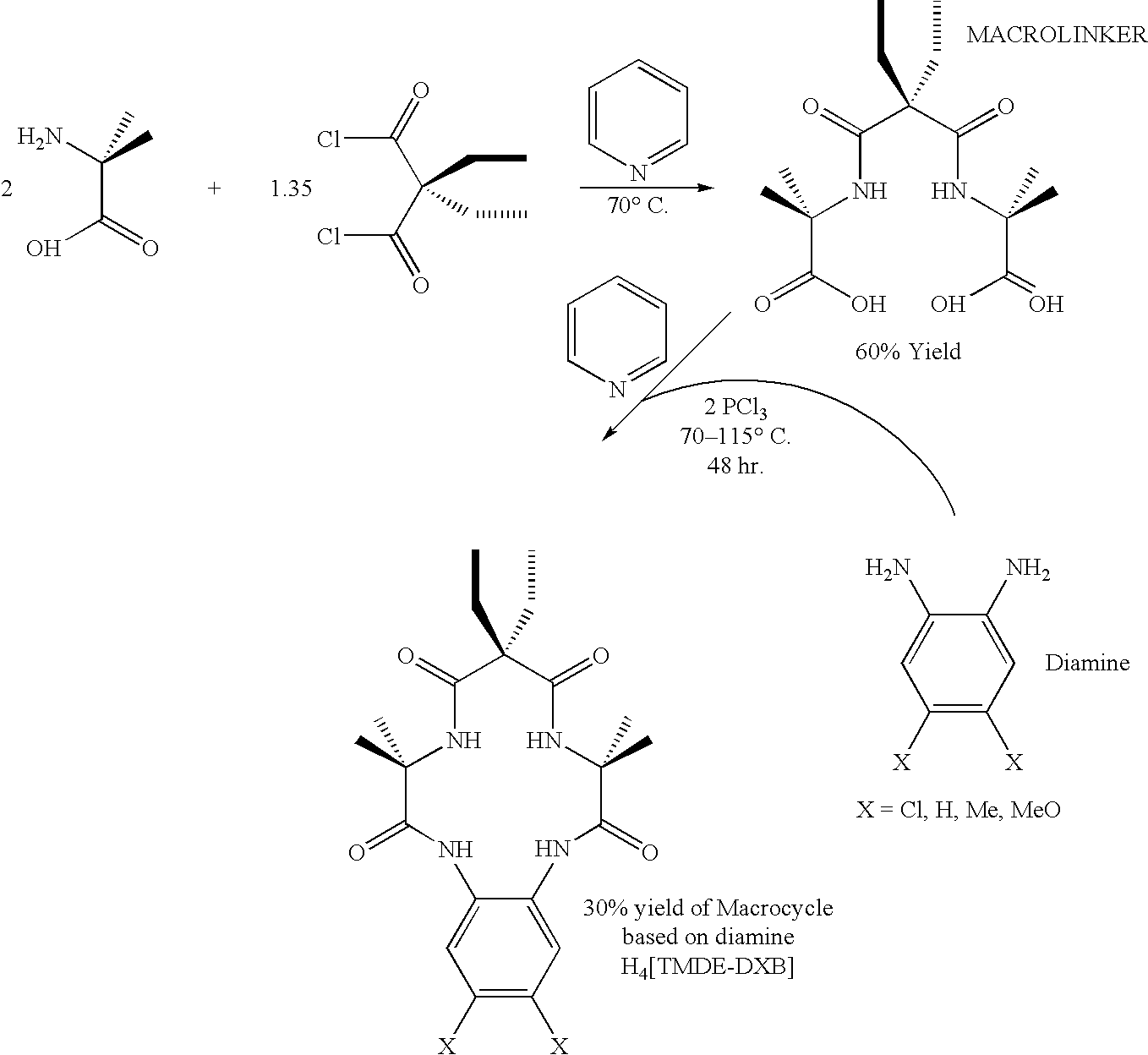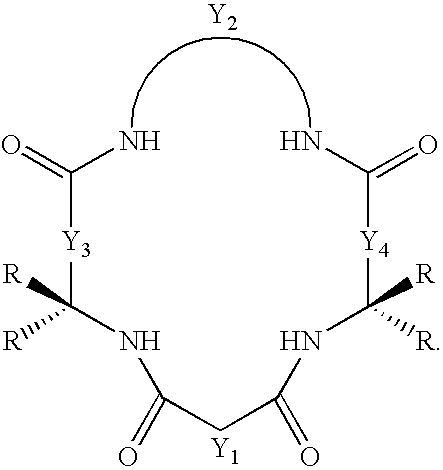Synthesis of macrocyclic tetraamido compounds and new metal insertion process
a macrocyclic tetraamido and compound technology, applied in the field of macrocyclic tetraamido compound synthesis and new metal insertion process, can solve the problems of difficult conversion to large-scale industrial use of the macrocyclic tetraamido compound, low efficiency of c—n bond generation, and high energy intermediate production
- Summary
- Abstract
- Description
- Claims
- Application Information
AI Technical Summary
Benefits of technology
Problems solved by technology
Method used
Image
Examples
Embodiment Construction
[0025]The method of the present invention provides a more efficient way to make macrocyclic tetraamido compounds, such as those having the structure
[0026]
[0027]The macrocyclic tetraamido compound may be complexed with a metal, as follows:
[0028]
[0029]In both of the foregoing structures, Y1, Y3 and Y4 each represents a bridging group, having zero, one, two or three carbon containing nodes for substitution, and Y2 is a bridging group having at least one carbon containing node for substitution. Each node contains a C(R) or a C(R)2 unit and each R substituent is the same or different from the remaining R substituents. Each R substituent (i) is selected from the group consisting of H, alkyl, cycloalkyl, cycloalkenyl, alkenyl, aryl, alkynyl, alkylaryl, halogen, alkoxy, or phenoxy, CH2CF3, CF3 and combinations thereof, or (ii) forms a substituted or unsubstituted benzene ring of which two carbon atoms in the ring form nodes in the Y unit, or (iii) together with a paired R substituent bound ...
PUM
| Property | Measurement | Unit |
|---|---|---|
| temperature | aaaaa | aaaaa |
| temperature | aaaaa | aaaaa |
| temperature | aaaaa | aaaaa |
Abstract
Description
Claims
Application Information
 Login to View More
Login to View More - R&D
- Intellectual Property
- Life Sciences
- Materials
- Tech Scout
- Unparalleled Data Quality
- Higher Quality Content
- 60% Fewer Hallucinations
Browse by: Latest US Patents, China's latest patents, Technical Efficacy Thesaurus, Application Domain, Technology Topic, Popular Technical Reports.
© 2025 PatSnap. All rights reserved.Legal|Privacy policy|Modern Slavery Act Transparency Statement|Sitemap|About US| Contact US: help@patsnap.com



